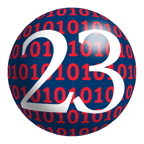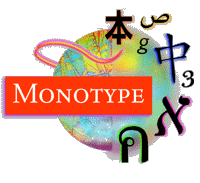
Unicode Conference Report
Exhibitor's Panel at IUC23
| Home | |
| Introduction | |
| AGFA Monotype | |
| Alchemy Software | |
| Moravia IT | |
| Multilingual Computing Inc. | |
| Conclusion | |
| IUC24 Invitation to Exhibit | |
 |
Exhibitors Panel at the 23rd Internationalization and Unicode Conference, Prague March, 2003
By Tex Texin

The Internationalization and Unicode Conference prides itself on its strong technical content. Each paper is reviewed by a committee of experts to ensure it has substantive content, technical accuracy, and that Unicode and Web standards are described with precision. Attendees can therefore rely on what they learn at the conference.
Conference attendees often also want to learn about product solutions and service providers. The conference SHOWCASE exhibition area has always provided a vehicle for vendors and attendees to connect. The conference board likes to innovate and set for itself the challenge of allowing vendors to make presentations, while keeping the conference content technical. The result was the Exhibitors Track, two sessions of the 23rd Internationalization and Unicode Conference, held in Prague in March, devoted to this new experiment. Using a panel format to allow audience interaction, exhibitors were asked to describe the latest advances in their technologies and methodologies and the challenges that face the industry.
The panel consisted of Tom Rickner of AGFA Monotype, Tony O'Dowd of Alchemy Software Development, Joe Didamo, of Moravia IT, and Laurel Wagers of Multilingual Computing. Tex Texin of XenCraft was the panel moderator. It is difficult to capture the entire 90 minutes of presentation and discussion, but here are some of the highlights of the panel discussion.
AGFA Monotype, Tom Rickner

AGFA Monotype is the largest digital font foundry and provider of high quality font rasterizers and imaging solutions. Tom described his industry's greatest challenges have to do with customer expectations. Customers presume that all of the fonts they need already exist and are available "off the shelf". Of course, they are also free. After all they received the other fonts on their system for free! As the fonts are based on Unicode, customers also presume all complex and multi-script issues are already resolved. And finally, the fonts work cross-platform as well.
Tom explained why some of these expectations cannot be met and gave concrete examples. Apparently, the Mac version of Office is not yet Unicode-ready, shooting a big hole in his cross-platform goal. Also, Microsoft and Adobe do not support the same feature sets of OpenType and important publishing applications like Quark do not yet support OpenType. Customers that want support for the entire Unicode character set in one font will have to wait until the fundamental limit of 64k glyphs in font formats is raised.
Tom didn't want to leave us without some positive news. Anyone interested in the China market should be aware of the requirement for support for the GB18030 character set. Tom announced that AGFA Monotype already has two Chinese fonts approved by the People's Republic of China. More details are at http://www.agfamonotype.com/software/gb18030.asp.
Alchemy Software Development Ltd., Tony O'Dowd

Alchemy Software Development is a localization tools vendor, best known for its product Catalyst. Tony gave a very dynamic presentation and described how the new standard XLIFF (XML Localization Interchange File Format) was being accepted by the industry and its benefits for interchanging translation memory.
Tony then described industry challenges. Diversity of technologies and frameworks (XML, .NET, database technologies, Web-centric rich-media applications, et al.) is leading to increased complexity of the localization process. In particular, the large variety of data formats greatly increases localization costs and requires localizable data to be carried throughout the development and localization process, across tools and participants. By standardizing on XLIFF, a single flexible, file format, all participants can focus on productivity, precision and product functionality, instead of interoperability and data exchange scenarios.
Alchemy Software Development took XLIFF one step further. They know that localization is more productive and accurate, if context can be visualized. So they created a Visual XLIFF solution to provide a near WYSIWYG environment. Alchemy Software Development gave previews in the SHOWCASE area and it looks to be an exciting development for the manipulation and interchange of the increasingly popular XLIFF file format.

Moravia IT, Joseph DiDamo

Joe represented the home team! Moravia IT is a full-service localization services provider for all of the world's business languages, headquartered in the Czech Republic. Their regional offices are in Europe, North America, Ireland and Asia.
Joe provided an overview of recent Czech history and its impact on the IT industry. The large influx of new technologies and infrastructure combined with the high level of education and innovation among the population (8 technical universities, 70,000 students) has fueled sharp rises in productivity. The economy is also benefiting and next year, Central and Eastern European countries will be joining the European Union, stimulating additional growth. Joe made clear that the Czech Republic was an exciting technological, innovative, and growing environment.
Moravia has taken advantage of its highly developed yet lower cost infrastructure and is growing organically, rather than through acquisitions. They train their staff in their own way, to ensure consistency throughout the company and in all aspects of production.
Moravia IT lives on the leading edge, improving industry processes, advancing new technologies, and promoting open standards. They were an early adopter of translation memory and now participate actively in OASIS Technical Committees including: XLIFF TC, Translation Web Services TC, and Web Services for Remote Portals TC. By contributing to these committees, Moravia IT also benefits. They gain experience and apply it to improving the services they deliver.
MultiLingual Computing (MLC), Laurel Wagers

Laurel is the managing editor. She announced several changes and developments. MLC's goal is to provide information and ideas for people involved in language technology and international software development, from developers to users and buyers of tools. This enables players throughout the industry to understand the needs and offerings of the other participants. Reader surveys show that the magazine is reaching software developers, vendors, tool users, managers, translators and others.
Seth Schneider, who founded the magazine, sold the magazine to company president and editor Donna Parrish. The same team is in place and is taking on several new projects, including:
The first annual index and resource directory was published between issues #54 and #55. It covers the issues published in 2002 and includes a glossary of industry terms as well as resource listings for reference in 2003.
To provide more content for translators, the translation department is being expanded. Bert Esselink, author of "A Practical Guide to Localization", will participate in developing a new department, Localization: Europe.
The MLC Web site now provides access to research material beyond what will fit in print. An example is the global Web project profiles compiled for the Global Web supplement.
MLC will also provide a series of monographs on specialized topics. The first will be a compilation of Bill Hall's articles on internationalization with Microsoft .NET.
The Unicode conference is a valuable resource for the language technology industry. MLC offered free one-year subscriptions to people conference attendees, hosted the book signing for Don DePalma, Michael Kaplan and Bill Hall, and is glad to participate in making the conference a success.
MLC also invited participants to submit either articles and Last Word opinion pieces to laurel@multilingual.com, or press releases and Viewpoints answers to kendra@multilingual.com. Submissions are also a way to be listed in next year's index. Inquiries about advertising and resource directory listings can be directed to advertising@multilingual.com.
Concluding Thoughts
The panel provided a good mix of current information about technology, trends, the industry in the Czech Republic, and changes at a key publication for our industry, while allowing the audience to better understand the skills and strengths of the vendors. It was a successful innovation which the Unicode Conference board will repeat in the IUC24 conference in Atlanta, Georgia this September.
For information about exhibiting at IUC24, see the IUC24 Invitation to Exhibit.
Copyright © 2003 Tex Texin. All rights reserved.